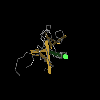?
 
IQ motif and SEC7 domain-containing protein family Pleckstrin homology domain The IQSEC (also called BRAG/Brefeldin A-resistant Arf-gunanine nucleotide exchange factor) family are a subset of Arf GEFs that have been shown to activate Arf6, which acts in the endocytic pathway to control the trafficking of a subset of cargo proteins including integrins and have key roles in the function and organization of distinct excitatory and inhibitory synapses in the retina. The family consists of 3 members: IQSEC1 (also called BRAG2/GEP100), IQSEC2 (also called BRAG1), and IQSEC3 (also called SynArfGEF, BRAG3, or KIAA1110). IQSEC1 interacts with clathrin and modulates cell adhesion by regulating integrin surface expression and in addition to Arf6, it also activates the class II Arfs, Arf4 and Arf5. Mutations in IQSEC2 cause non-syndromic X-linked intellectual disability as well as reduced activation of Arf substrates (Arf1, Arf6). IQSEC3 regulates Arf6 at inhibitory synapses and associates with the dystrophin-associated glycoprotein complex and S-SCAM. These members contains a IQ domain that may bind calmodulin, a PH domain that is thought to mediate membrane localization by binding of phosphoinositides, and a SEC7 domain that can promote GEF activity on ARF. PH domains have diverse functions, but in general are involved in targeting proteins to the appropriate cellular location or in the interaction with a binding partner. They share little sequence conservation, but all have a common fold, which is electrostatically polarized. Less than 10% of PH domains bind phosphoinositide phosphates (PIPs) with high affinity and specificity. PH domains are distinguished from other PIP-binding domains by their specific high-affinity binding to PIPs with two vicinal phosphate groups: PtdIns(3,4)P2, PtdIns(4,5)P2 or PtdIns(3,4,5)P3 which results in targeting some PH domain proteins to the plasma membrane. A few display strong specificity in lipid binding. Any specificity is usually determined by loop regions or insertions in the N-terminus of the domain, which are not conserved across all PH domains. PH domains are found in cellular signaling proteins such as serine/threonine kinase, tyrosine kinases, regulators of G-proteins, endocytotic GTPases, adaptors, as well as cytoskeletal associated molecules and in lipid associated enzymes. |
